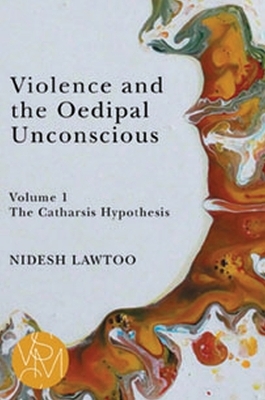
Violence and the Oedipal Unconscious
Volume 1: The Catharsis Hypothesis
Seiten
2023
Michigan State University Press (Verlag)
978-1-61186-448-9 (ISBN)
Michigan State University Press (Verlag)
978-1-61186-448-9 (ISBN)
Reframes current debates on (new) media violence by tracing the philosophical, aesthetic, and historical vicissitudes of the “catharsis hypothesis” from antiquity to modernity and into the present.
Representations of violence are often said to generate cathartic effects, but what does “catharsis” mean? And what theory of the unconscious made this concept so popular that it reaches from classical antiquity to the digital age? In Violence and the Oedipal Unconscious, Nidesh Lawtoo reframes current debates on (new) media violence by tracing the philosophical, aesthetic, and historical vicissitudes of the “catharsis hypothesis” from antiquity to modernity and into the present. Drawing on theorists of mimesis from Aristotle to Nietzsche, Bernays to Breuer, Freud to Girard to Morin, Lawtoo offers a genealogy of the relationship between violence and the unconscious with at least two aims: First, this study gives an account of the birth of the Oedipal unconscious—out of a “cathartic method.” Second, it provides new theoretical foundations to solve a riddle of (new) media violence that may no longer rest on Oedipal solutions. In the process, Lawtoo outlines a new theory of violence, mimesis, and the unconscious that does not have desire as a via regia, but rather, the untimely realization that all affects spread contagiously and thus mimetically.
Representations of violence are often said to generate cathartic effects, but what does “catharsis” mean? And what theory of the unconscious made this concept so popular that it reaches from classical antiquity to the digital age? In Violence and the Oedipal Unconscious, Nidesh Lawtoo reframes current debates on (new) media violence by tracing the philosophical, aesthetic, and historical vicissitudes of the “catharsis hypothesis” from antiquity to modernity and into the present. Drawing on theorists of mimesis from Aristotle to Nietzsche, Bernays to Breuer, Freud to Girard to Morin, Lawtoo offers a genealogy of the relationship between violence and the unconscious with at least two aims: First, this study gives an account of the birth of the Oedipal unconscious—out of a “cathartic method.” Second, it provides new theoretical foundations to solve a riddle of (new) media violence that may no longer rest on Oedipal solutions. In the process, Lawtoo outlines a new theory of violence, mimesis, and the unconscious that does not have desire as a via regia, but rather, the untimely realization that all affects spread contagiously and thus mimetically.
Nidesh Lawtoo is an assistant professor of philosophy and English at KU Leuven in Belgium, where he leads an ERC-funded project titled Homo Mimeticus: Theory and Criticism. He was previously visiting scholar in the Humanities Center at Johns Hopkins University, and he is the author of Conrad’s Shadow: Catastrophe, Mimesis, Theory; The Phantom of the Ego: Modernism and the Mimetic Unconscious; and (New) Fascism: Contagion, Community, Myth.
| Erscheinungsdatum | 05.05.2023 |
|---|---|
| Reihe/Serie | Studies in Violence, Mimesis & Culture |
| Zusatzinfo | 3 illustrations |
| Verlagsort | East Lansing, MI |
| Sprache | englisch |
| Maße | 147 x 226 mm |
| Gewicht | 318 g |
| Themenwelt | Geisteswissenschaften ► Philosophie |
| Sozialwissenschaften ► Kommunikation / Medien ► Medienwissenschaft | |
| Sozialwissenschaften ► Soziologie ► Allgemeines / Lexika | |
| ISBN-10 | 1-61186-448-8 / 1611864488 |
| ISBN-13 | 978-1-61186-448-9 / 9781611864489 |
| Zustand | Neuware |
| Haben Sie eine Frage zum Produkt? |
Mehr entdecken
aus dem Bereich
aus dem Bereich
wie KI und virtuelle Welten von uns Besitz ergreifen – und die …
Buch | Hardcover (2023)
Heyne (Verlag)
CHF 29,90
Eine Einführung
Buch | Softcover (2022)
Springer VS (Verlag)
CHF 46,15


